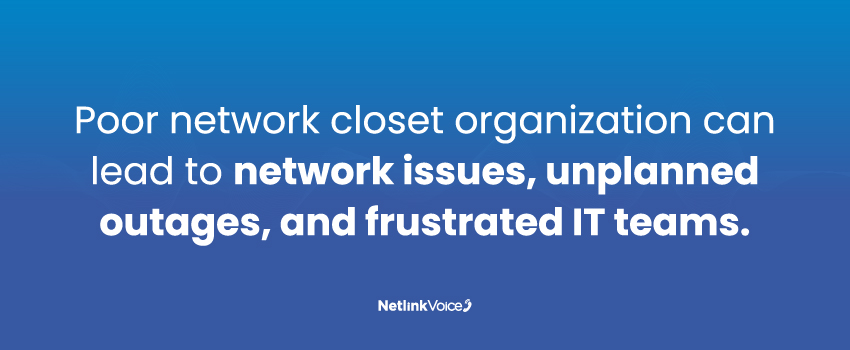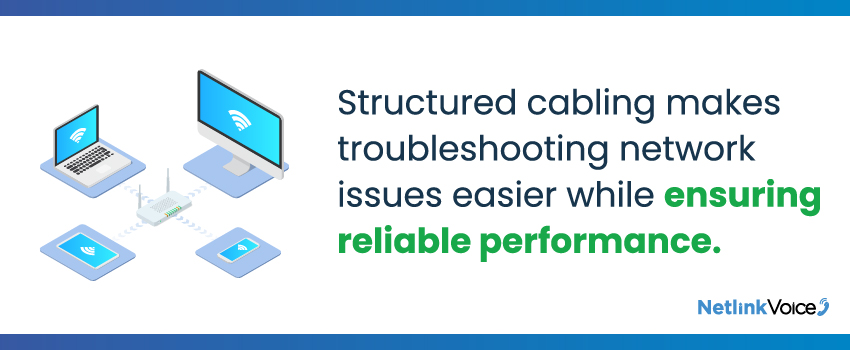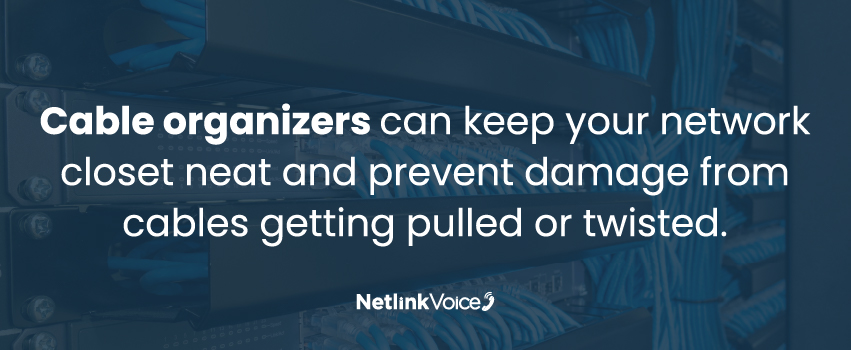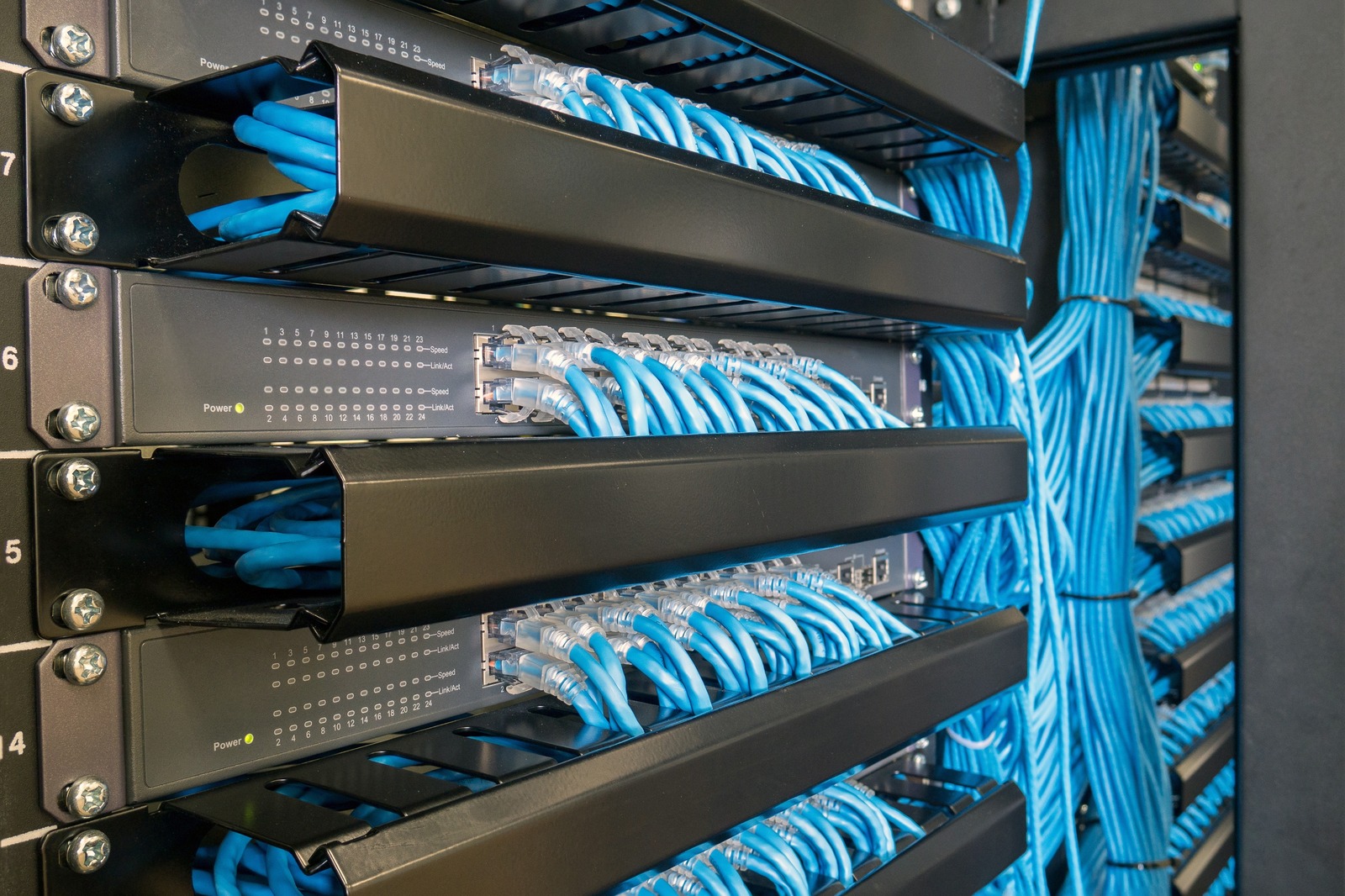A well-organized network closet is important for any business that relies on IT infrastructure. This often-overlooked space houses the equipment that keeps your network running smoothly, including your servers, routers, switches, and cabling.
But what goes into making your network closet work, and how can you maximize its efficiency? In this blog, we’ll break down everything you need to know about network closets, from why they’re important to how you can maintain an organized, efficient space.
What Is a Network Closet?
A network closet, sometimes referred to as a network room or telecommunications closet, is a dedicated space within a building that houses networking equipment and serves as the central hub for network connectivity.
When properly managed, network closets ensure reliable connectivity throughout your business. However, poor organization can quickly lead to network issues, unplanned outages, and frustrated IT teams spending extra time on basic maintenance tasks.

Why Do Businesses Need an Organized Network Closet?
An organized network closet isn’t just about aesthetics; it’s a must for reliable network infrastructure. Here’s why your network room should matter for your business:
- Reduced Downtime: A clutter-free network closet allows for faster troubleshooting and maintenance.
- Enhanced Performance: Proper organization minimizes the risk of misconfigurations and connection issues.
- Improved Security: Restricted access keeps your equipment and data safe from unauthorized users.
- Simple Scalability: An organized network closet makes it easier to add new equipment as your business grows.
In short, organizing your network closet can help your IT team work more efficiently – while reducing the risk of costly network problems.
Essential Network Closet Components
A typical network closet contains several components that work together to enable connectivity, including:
Racks and Cabinets
Equipment racks and cabinets provide secure mounting points for your servers and network hardware. These sturdy frames keep everything accessible while protecting your valuable equipment.
Patch Panels
These central connection points simplify cable management and network changes. Patch panels make it easy to modify connections without disrupting your entire network.
Power Supply Units
Networking equipment needs reliable power, including uninterruptible power supply (UPS) systems and backup power solutions. These protect against power fluctuations while keeping critical systems running when the main power fails.
Cooling Systems
Network equipment generates a lot of heat, making proper cooling systems necessary for preventing equipment failures and extending hardware life. Cooling systems maintain safe operating temperatures through a combination of fans, vents, and climate control units.
Structured Cabling
A structured cabling system connects all your network components in an organized, efficient way. This standardized approach makes troubleshooting easier while ensuring reliable network performance.

5 Tips To Organize Your Network Closet for Maximum Efficiency
Ready to organize your network closet? Here are some best practices to help you optimize each part of your network closet setup:
1. Invest in Quality Racks and Cabinets
Using quality racks and cabinets makes all the difference in network closet organization. Networking equipment needs proper cooling, so look for racks with built-in ventilation features. Cable organization features are also important, as they help reduce clutter.
Make sure to mount racks securely to the floor or wall to prevent movement that could disconnect or damage equipment. The right mounting setup also ensures your team can easily reach equipment for maintenance or updates without risking damage to other components.
2. Label Everything Clearly
Labeling is one of the easiest yet most effective ways to organize a network closet. Clearly labeled equipment, cables, and patch panels can help IT teams locate connections faster, saving time during maintenance or troubleshooting.
Use color-coded labels for different types of connections and establish clear, consistent naming conventions so that everyone on your team can understand exactly what each component does.
3. Plan For Sufficient Power and Backup
Reliable power is a crucial part of any network closet. Use a dedicated circuit for your network equipment, and invest in a UPS unit to protect against power fluctuations and outages.
Choose a UPS with enough capacity to either keep your critical systems running or shut everything down safely during longer power outages. And don’t forget to test your backup power solutions – regular testing can help you ensure the UPS will work when you need it.
4. Keep Cables Organized
Good cable organization reduces network problems, maintains airflow, and makes your network closet easier to maintain. Use cable organizers like cable trays or Velcro ties to keep everything neat and prevent damage from cables getting pulled or twisted.
Organizing your power and data cables can also help prevent interference that could slow down your network. Using proper support methods and leaving enough slack in cable runs prevents strain that could cause connection problems.

5. Prioritize Cooling and Ventilation
Maintaining optimal temperatures in your network room keeps your equipment running reliably. Space equipment properly and use the right cooling systems to prevent overheating. You can start with basic cooling and add more as needed when you add equipment.
Regularly clean and maintain your cooling systems, including changing filters and checking fans, to help everything continue to run efficiently. You might also consider investing in temperature monitoring software, which can help your IT teams identify cooling problems before they can hurt your equipment.
Is It Time To Upgrade Your Network Closet?
As your business grows, your network closet may need to evolve to accommodate your increased IT demands. Watch out for signs that it may be time to upgrade, such as:
- Limited Space: If your equipment is getting cramped, adding more racks or relocating to a larger space can improve organization.
- Frequent Downtime: Persistent network connectivity issues might mean you need better cooling, cabling, or equipment upgrades.
- Increased Security Needs: If your data protection or regulatory requirements change, adding more security measures in your network closet may be necessary.
Catching these three warning signs early can help you prevent bigger problems later.
Maximize Your Network Closet Efficiency With Netlink Voice
An organized network closet does more than keep your equipment tidy – it protects your business from costly downtime, simplifies maintenance, and improves your network performance. When your network closet works efficiently, your IT team can spend less time troubleshooting problems and more time supporting your business growth.
At Netlink Voice, we help businesses like yours optimize, secure, and scale their network environments. Whether you’re looking to organize your network closet or need guidance on managing your infrastructure as you grow, we’re here to support you with tailored infrastructure solutions from a provider who picks up the phone when you call.
Reach out to us today to learn more about how we can help you build an efficient network closet that meets your business’s needs.

